Familial hypercholesterolemia is a genetic condition that causes a person to have high levels of LDL cholesterol, commonly known as “bad” or “lousy” cholesterol.
Children with family history of familial hypercholesterolemia are at increased risk of developing heart problems when they get older. Therefore, it is specially important to make sure that they follow a diet that helps keep their blood cholesterol low.
What can you do to help your child?
The diet that your child should follow is not much different that that recommended for adults with high blood cholesterol. This doesn’t mean that your child has to eat bland food… it only means that more attention needs to be paid when preparing meals and making food choices. You can start by getting your child involved in cooking and educating him/her about healthier choices.
What dietary changes should you make?
1. Ensure variety in your child’s diet
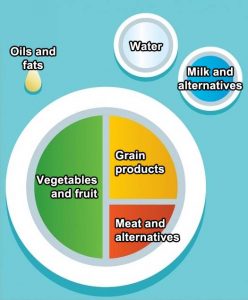
This is not only to help your child, but it helps anyone in your family. Make sure that your diet includes choices from all good groups including Fruits and Vegetables, Milk and Alternatives, Meat and Alternatives, and Grain Products.
2. Include foods that are high in fibre
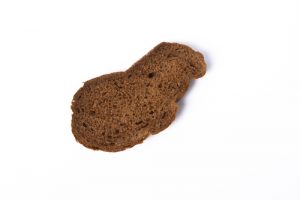 When preparing food, choose more products that are whole grains. For example, whole grain bread and pasta, oats, barley, quinoa and breakfast cereals that are high in fibre. Also, include lots of fruits and vegetables in meals and as snack. Pules or legumes (e.g. beans, peas, lentils) are very high sources of fibre that can be incorporated in meals.
When preparing food, choose more products that are whole grains. For example, whole grain bread and pasta, oats, barley, quinoa and breakfast cereals that are high in fibre. Also, include lots of fruits and vegetables in meals and as snack. Pules or legumes (e.g. beans, peas, lentils) are very high sources of fibre that can be incorporated in meals.
3. Choose protein sources wisely
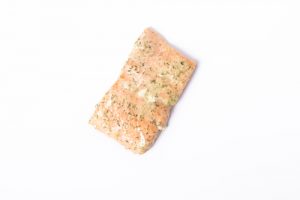 Fatty fish are high in omega-3 fats and should be a part of a healthy diet. Choose fish such as salmon, sardines, mackerel and trout. Try creative ways to use pulses or legumes as source of protein in meals. When choosing meat and poultry, choose lean cuts and remove the skin. When choosing dairy, select low-fat products such as 1% or 2% milk and yogurt, and cheese with 20% or less milk fat (M.F.).
Fatty fish are high in omega-3 fats and should be a part of a healthy diet. Choose fish such as salmon, sardines, mackerel and trout. Try creative ways to use pulses or legumes as source of protein in meals. When choosing meat and poultry, choose lean cuts and remove the skin. When choosing dairy, select low-fat products such as 1% or 2% milk and yogurt, and cheese with 20% or less milk fat (M.F.).
4. Be mindful of the type of fat you use
Fat should be a part of a healthy diet. Choose healthy fats including monounsaturated fats (e.g. olive, avocado) and polyunsaturated fats (e.g. canola, safflower, sunflower, soybean). Limit saturated fats such as butter and avoid trans and hydrogenated fats.
5. Limit sugary beverage
Sugary drinks don’t provide your child with much nutritional benefit. Replace soda and juice with healthy drinks such as flavoured water and small portions of home-made smoothies.
What are some practical steps that I can take?
Generally speaking, a diet low in saturated fat and cholesterol, and high in complex carbohydrates (namely fibre). Emphasis could be placed on breakfast which is a good opportunity to select high-fibre foods such as whole-grain cereal and bread, oatmeal, and fruit. Consider topping cereal with high-fibre dried fruit such as prunes and apricots. It is a great idea to sprinkle some ground flaxseed which is also very high in fibre, or using chia seeds in preparing oats. If your child isn’t a fan of cereal and oatmeal, try whole-grain toast with natural peanut butter and real fruit jelly or banana slices.
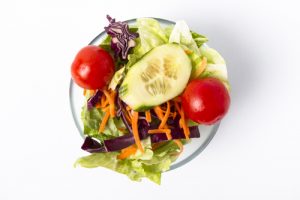 For lunch, children tend to enjoy fun sandwiches. When making sandwiches, consider using whole-grain bread (note that whole-grain is different from wholewheat!). Choose lower fat protein, such as tuna, fish, chicken breast and turkey, and stuff the sandwich with lots of vegetables (e.g. lettuce, tomatoes, pickles, pepper). As a side, consider preparing a fun and colourful salad. Include vegetables that your child enjoys and make sure to use a dressing that includes good fats (e.g. olive oil, avocados).
For lunch, children tend to enjoy fun sandwiches. When making sandwiches, consider using whole-grain bread (note that whole-grain is different from wholewheat!). Choose lower fat protein, such as tuna, fish, chicken breast and turkey, and stuff the sandwich with lots of vegetables (e.g. lettuce, tomatoes, pickles, pepper). As a side, consider preparing a fun and colourful salad. Include vegetables that your child enjoys and make sure to use a dressing that includes good fats (e.g. olive oil, avocados).
For snack, have fruit and nuts handy. Let your child choose fruits that he or she enjoys. A 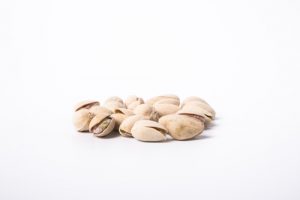 great snack would be berries and low-fat Greek yogurt. Banana or apple spices with peanut butter are usually fun! Nuts are also great as they are nutritious and contain healthy fats. Consider packing a handful of almonds or peanuts, or mix them with dried fruits such as raisins! To make snacks extra special, consider light popcorn, low-fat frozen yogurt, nuts and seeds.
great snack would be berries and low-fat Greek yogurt. Banana or apple spices with peanut butter are usually fun! Nuts are also great as they are nutritious and contain healthy fats. Consider packing a handful of almonds or peanuts, or mix them with dried fruits such as raisins! To make snacks extra special, consider light popcorn, low-fat frozen yogurt, nuts and seeds.
For dinner, roasted vegetables can be fun. Again, emphasis could be placed on making vegetables look attractive by selecting fun colours and plating them in a fun way. Also, try to prepare more of vegetables that your kid enjoys. Cook more fish and less red meat to reduce the amount of saturated fat in your child’s diet and add more healthy fats (e.g. omega 3 fats). Try to include salad in every meal. Salad can be fun, especially if you involve your child in preparing them! Trying different recipes and use a variety of toppings such as sunflower seeds, pumpkin seeds, craisins, flaxseed, and chopped fruits. For dressing, prepare your own using healthy and tasty ingredients such as balsamic, olive oil, avocados, yogurt, etc. (maybe add some herbs to make the dressing extra special!).
Aside from diet, make sure to keep your child physically active! Ensure at least 30 minutes of physical activity by encouraging your child to play outside or help with daily activities at home.
Here are some recipe ideas:
Breakfast
Baked Apples with Cinnamon-Oat Topping
Lunch
Potato Salad with Green Beans and Tomatoes
Dinner
Cinnamon-Poached Chicken and Rice Recipe

2 thoughts on “Managing High Blood Cholesterol in Children with Family History of High Blood Cholesterol”
This is so amazing and cool!!!
Thank you Anja! 🙂 Let me know if you are interested in any other topics!